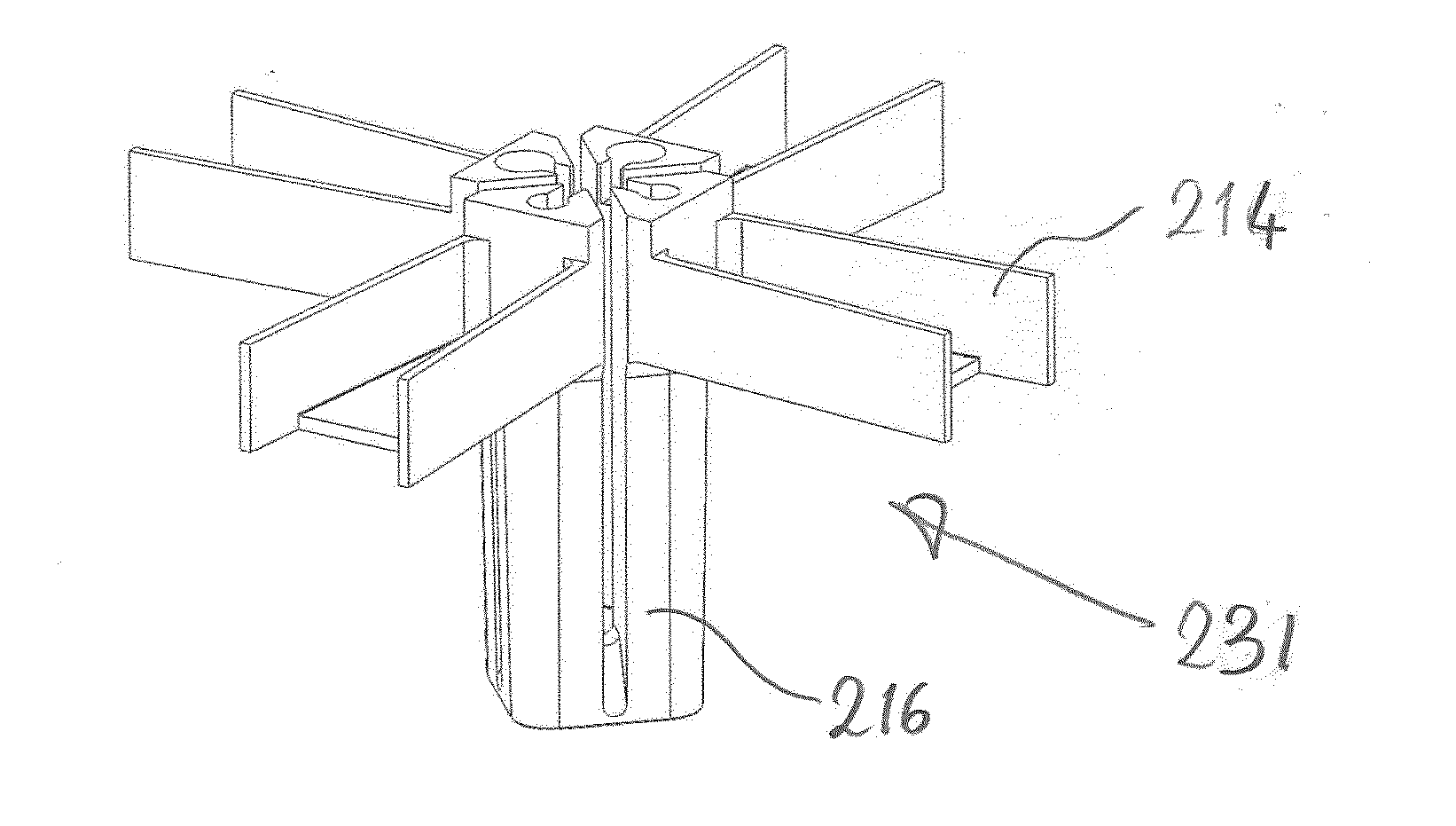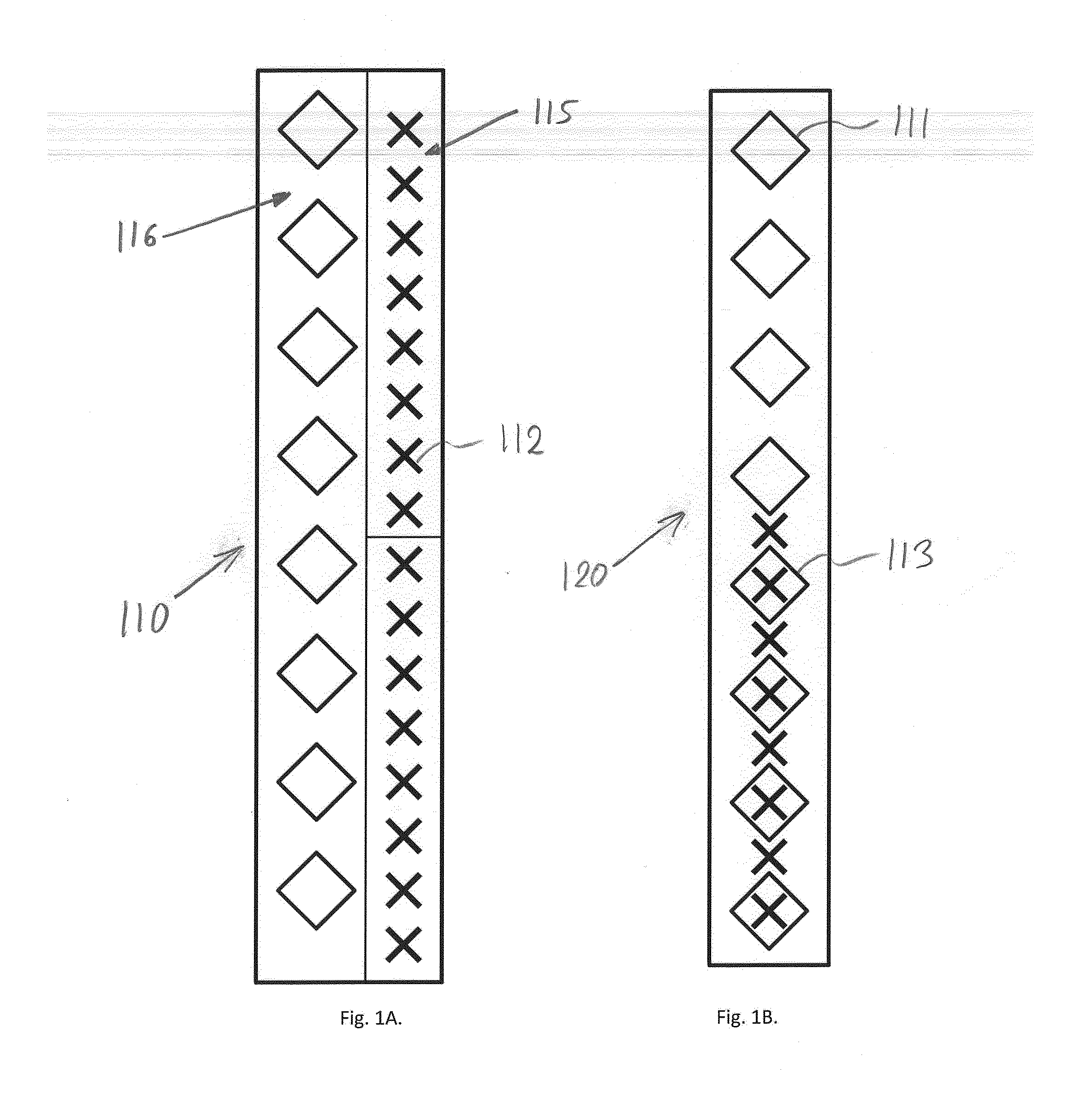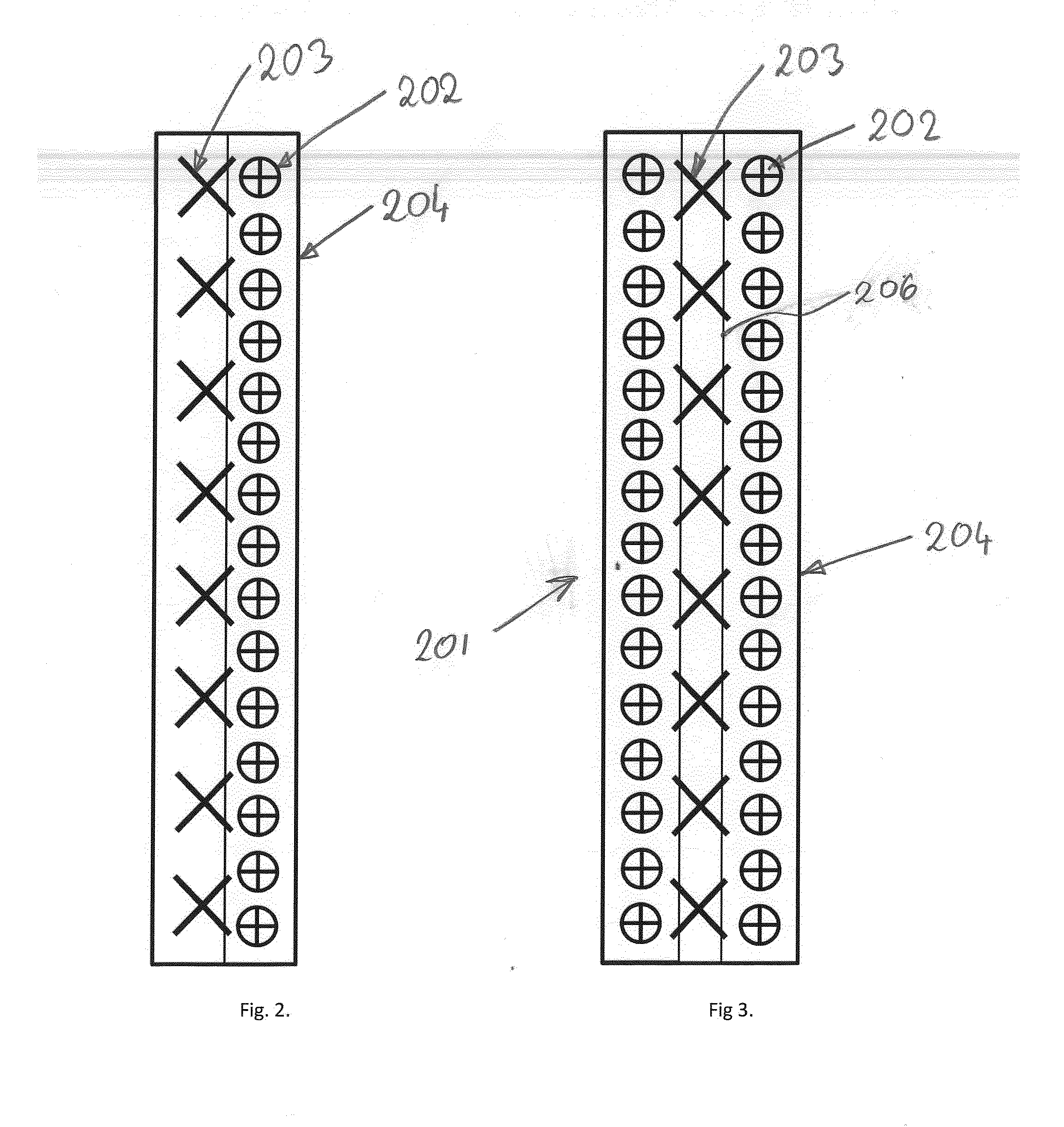An antenna arrangement and a base station
a technology of antenna arrangement and base station, which is applied in the direction of individual energised antenna arrays, resonant antennas, wireless communication, etc., can solve the problems of increasing the loss of a conventional feeding network based on narrow flexible cables, reducing the performance of low band and high band at the same time, and reducing the cost of operation. , the effect of improving the dipole bandwidth
- Summary
- Abstract
- Description
- Claims
- Application Information
AI Technical Summary
Benefits of technology
Problems solved by technology
Method used
Image
Examples
Embodiment Construction
[0042]FIGS. 2-4 schematically show aspects of embodiments of the antenna arrangements according to present invention, comprising a reflector 204, and radiators 202 and 203. In FIG. 2, a first column of Low Band radiators 203 are placed on a reflector 204. A second column of High Band radiators 202 are placed next to the first column. The High Band radiators 202 are smaller than the Low Band radiators 203, and the separation between radiators is smaller than for the Low Band radiators, hence more High Band radiators are needed in order to occupy the full height of the reflector. In FIG. 3, a first column of Low Band radiators 203 is placed in the middle of the reflector 204. A second column of High Band radiators 202 is placed to one side of the first column, and a third column of High Band radiators 202 is placed on the other side of the other side of the first column. All three columns occupy the full height of the reflector 204. FIG. 4 shows a schematic side view of an embodiment ...
PUM
 Login to View More
Login to View More Abstract
Description
Claims
Application Information
 Login to View More
Login to View More - R&D
- Intellectual Property
- Life Sciences
- Materials
- Tech Scout
- Unparalleled Data Quality
- Higher Quality Content
- 60% Fewer Hallucinations
Browse by: Latest US Patents, China's latest patents, Technical Efficacy Thesaurus, Application Domain, Technology Topic, Popular Technical Reports.
© 2025 PatSnap. All rights reserved.Legal|Privacy policy|Modern Slavery Act Transparency Statement|Sitemap|About US| Contact US: help@patsnap.com



